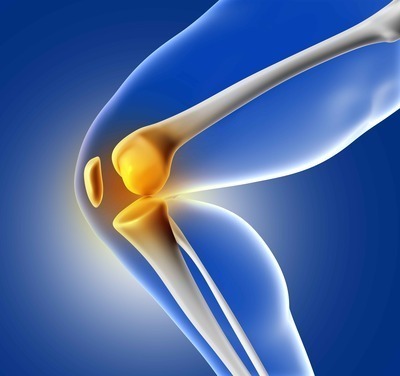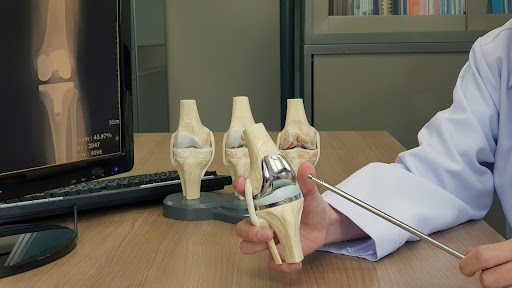Urology
Prostate Artery Embolization vs. Traditional BPH Treatment: Which is Better?

by admin
10th August 2023
8 minutes read
The prostate gland is a walnut-sized organ located below the bladder in men. As men age, it is common for the prostate to undergo changes, leading to an enlargement known as benign prostatic hyperplasia (BPH). BPH is a prevalent condition among aging men and can cause bothersome urinary symptoms, affecting their quality of life. Over the years, various treatment options have been developed to manage BPH effectively. Among these, traditional treatments like medications and surgeries have been widely used. However, in recent years, a minimally invasive procedure called Prostate Artery Embolization (PAE) has emerged as an alternative treatment for BPH. In this blog, we will explore and compare Prostate Artery Embolization with traditional BPH treatments to understand which one may be better suited for individual patients.
Understanding BPH and its Symptoms
Benign Prostatic Hyperplasia (BPH), also known as prostate gland enlargement, is a common condition that affects men as they age. The prostate is a walnut-sized gland located just below the bladder and in front of the rectum. It plays a vital role in the male reproductive system by producing seminal fluid that nourishes and transports sperm during ejaculation.
As men age, hormonal changes, specifically an increase in dihydrotestosterone (DHT), can lead to the growth of the prostate gland. This enlargement is a natural part of the aging process and is not related to cancer. However, if the prostate becomes too enlarged, it can cause various urinary symptoms and impact a man’s quality of life.
Symptoms of BPH:
The symptoms of BPH can vary in severity and can be bothersome for some men. Common symptoms of BPH include:
- Frequent Need to Urinate: Men with BPH may experience a frequent urge to urinate, especially during the night (nocturia).
- Difficulty Starting Urination: BPH can cause a weak urine stream or difficulty initiating urination.
- Weak Urine Stream: The urine stream may be weaker or slower than usual due to the obstruction caused by the enlarged prostate.
- Straining to Urinate: Men may feel the need to strain or push to empty the bladder completely.
- Incomplete Emptying of the Bladder: BPH can lead to a feeling of incomplete bladder emptying after urination.
- Urinary Urgency: Men with BPH may experience a sudden and urgent need to urinate.
- Urinary Retention: In severe cases, BPH can lead to urinary retention, where the bladder cannot empty completely, causing discomfort and potential complications.
It is essential to note that not all men with BPH will experience all of these symptoms. The severity and combination of symptoms can vary from person to person.
Diagnosis of BPH:
If a man experiences any of the above symptoms, it is crucial to seek medical evaluation. A healthcare provider, typically a urologist, will conduct a thorough medical history and physical examination. The evaluation may include:
- Digital Rectal Exam (DRE): During a DRE, the urologist inserts a gloved finger into the rectum to feel the size and condition of the prostate gland.
- Prostate-Specific Antigen (PSA) Test: The PSA blood test measures the level of PSA, a protein produced by the prostate. Elevated PSA levels can indicate prostate-related issues, including BPH.
- Urinalysis: A urine sample may be collected and analyzed to rule out urinary tract infections or other urinary problems.
- Urinary Flow Test: A urinary flow test measures the speed and force of urine flow, which can help evaluate the severity of obstruction caused by BPH.
- Ultrasound: Transrectal ultrasound (TRUS) or abdominal ultrasound may be used to obtain images of the prostate gland and assess its size and condition.
Traditional BPH Treatment Options
Medications:
Several medications are available to manage BPH symptoms. Alpha-blockers, such as tamsulosin and alfuzosin, relax the muscles around the prostate and bladder neck, improving urine flow. 5-alpha reductase inhibitors, such as finasteride and dutasteride, reduce prostate size by blocking the conversion of testosterone to dihydrotestosterone (DHT), a hormone that contributes to prostate growth. Combination therapy using both alpha-blockers and 5-alpha reductase inhibitors may be prescribed in some cases.
Minimally Invasive Procedures:
Transurethral Resection of the Prostate (TURP) is a common minimally invasive surgical procedure for BPH. It involves removing portions of the enlarged prostate that are obstructing urine flow through a small instrument inserted through the urethra. Other minimally invasive procedures include Transurethral Incision of the Prostate (TUIP) and Laser Therapy.
Open Surgery:
In cases of severe BPH or when other treatments have not been effective, open surgery, such as a simple prostatectomy, may be recommended. During this surgery, a surgeon removes the enlarged part of the prostate, relieving pressure on the urethra.
Prostate Artery Embolization (PAE)
Prostate Artery Embolization is a relatively new minimally invasive procedure for treating BPH. During PAE, a trained interventional radiologist uses X-ray guidance to insert a catheter into the arteries supplying blood to the prostate. Tiny particles (embolic agents) are then injected into the arteries to block the blood flow, causing the prostate to shrink. By reducing blood flow to the prostate, PAE aims to alleviate BPH symptoms and improve urinary function.
PAE is performed under local anesthesia and typically requires a shorter hospital stay compared to traditional surgeries. It is a suitable option for patients who are not ideal candidates for surgery due to medical conditions or those who wish to avoid surgical risks and potential complications.
Comparing Prostate Artery Embolization with Traditional BPH Treatments
- Invasiveness: PAE is considered less invasive than traditional surgeries like TURP or open surgery. It is a catheter-based procedure performed through a small incision in the wrist or groin, reducing the risk of bleeding, infections, and the need for general anesthesia.
2. Recovery Time: PAE usually requires a shorter hospital stay and recovery time compared to open surgery. Patients can often resume normal activities within a few days to a week after the procedure.
3. Sexual Function: PAE has been reported to have a lower risk of sexual side effects compared to traditional surgeries like TURP, which can sometimes cause erectile dysfunction or retrograde ejaculation.
4. Prostate Size: While both PAE and TURP can reduce prostate size, TURP typically provides a more significant reduction. However, PAE can still be effective in improving BPH symptoms.
5. Long-term Results: Long-term data on the effectiveness of PAE is still emerging, and more research is needed to fully understand its durability compared to traditional BPH treatments.
6. Procedural Expertise: PAE requires specialized training in interventional radiology, and not all medical centers offer this procedure. On the other hand, TURP and other traditional surgeries are more widely available.
Factors Affecting Treatment Choice
The choice between Prostate Artery Embolization and traditional BPH treatments depends on various factors, including:
Patient Preference: Some patients may prefer the less invasive nature of PAE and its potential benefits in sexual function and recovery time.
Prostate Size: PAE may be more suitable for patients with moderately enlarged prostates, while traditional surgeries may be recommended for patients with significantly enlarged prostates.
Overall Health: Patients with certain medical conditions that increase the risks associated with surgery may find PAE to be a safer option.
Availability of Expertise: The availability of interventional radiologists trained in PAE may influence the treatment options available to patients.
Takeaway
Both Prostate Artery Embolization and traditional BPH treatments have their advantages and may be suitable for different patients based on individual needs and medical conditions. The decision between the two should be made after careful consideration of the patient’s symptoms, prostate size, overall health, and preferences. Consulting with a urologist or interventional radiologist who specializes in BPH treatment can help patients make informed decisions and receive the most appropriate and effective treatment for their condition.
How Can Medfin Help?
Medfin is a daycare surgery expert providing access to the latest surgical procedures and top doctors in your city at affordable prices. Medfin provides you access to top doctors and surgeons with 10+ years of experience . With Medfin, you can leave your hassles behind and focus on your health. From instant consultations to paperwork assistance, we have got you covered with everything. So why wait? Call us today!
Frequently Asked Questions
Prostate Artery Embolization is performed under local anesthesia, so patients usually experience minimal discomfort during the procedure. After the procedure, patients may experience mild soreness, which can be managed with over-the-counter pain medications.
PAE can be repeated if necessary, but it is essential to consider other treatment options if PAE does not provide the desired symptom relief.
The success rate of PAE varies, and more research is needed to fully understand its long-term effectiveness compared to traditional BPH treatments. However, studies have shown promising results in improving BPH symptoms and urinary function.
In many cases, PAE is covered by insurance, but coverage may vary based on the insurance provider and specific policy. Patients should check with their insurance provider to determine coverage eligibility.
Not all patients with BPH are suitable candidates for PAE. Patients need to be carefully evaluated by a medical professional to determine if they are appropriate candidates for this procedure.
CATEGORIES
- ACL Reconstruction
- Anal Fissures
- Anal Fistula
- Appendicitis
- ASK A DOCTOR
- Benign Prostatic Hyperplasia
- Breast Lump Excision
- Cataract
- Circumcision
- Conditions & Diseases
- Cosmetology
- Covid-19
- Cure
- Endocrinology
- ENGLISH VIDEOS
- Eye Care
- Gallstones
- General Surgeries
- Government Schemes
- Gynaecology
- Gynecomastia
- Health
- Health Insurance
- Hernia
- Hindi
- Hip Arthoscopy
- Hip Replacement
- Hip Replacement Surgery
- Hydrocele
- Kannada
- Kidney Stones
- Knee Arthroscopic
- Laparoscopic
- LASER
- Latest Treatments
- Lifestyle
- Liposuction
- Medfin Stories
- Medicine
- Nephrology
- Ophthalmology
- Orthopaedic
- Paraphimosis
- Patient Testimonials
- PCL Reconstruction
- Phimosis
- Piles (Hemorrhoids)
- Pilonidal Sinus
- Proctology
- Prostate Artery Embolization
- Rhinoplasty
- Second Opinion
- Total Knee Replacement
- Urology
- Uterine Artery Embolization
- Uterine Fibroids
- Varicocele
- Varicose Veins
- Vascular
- VIDEOS







